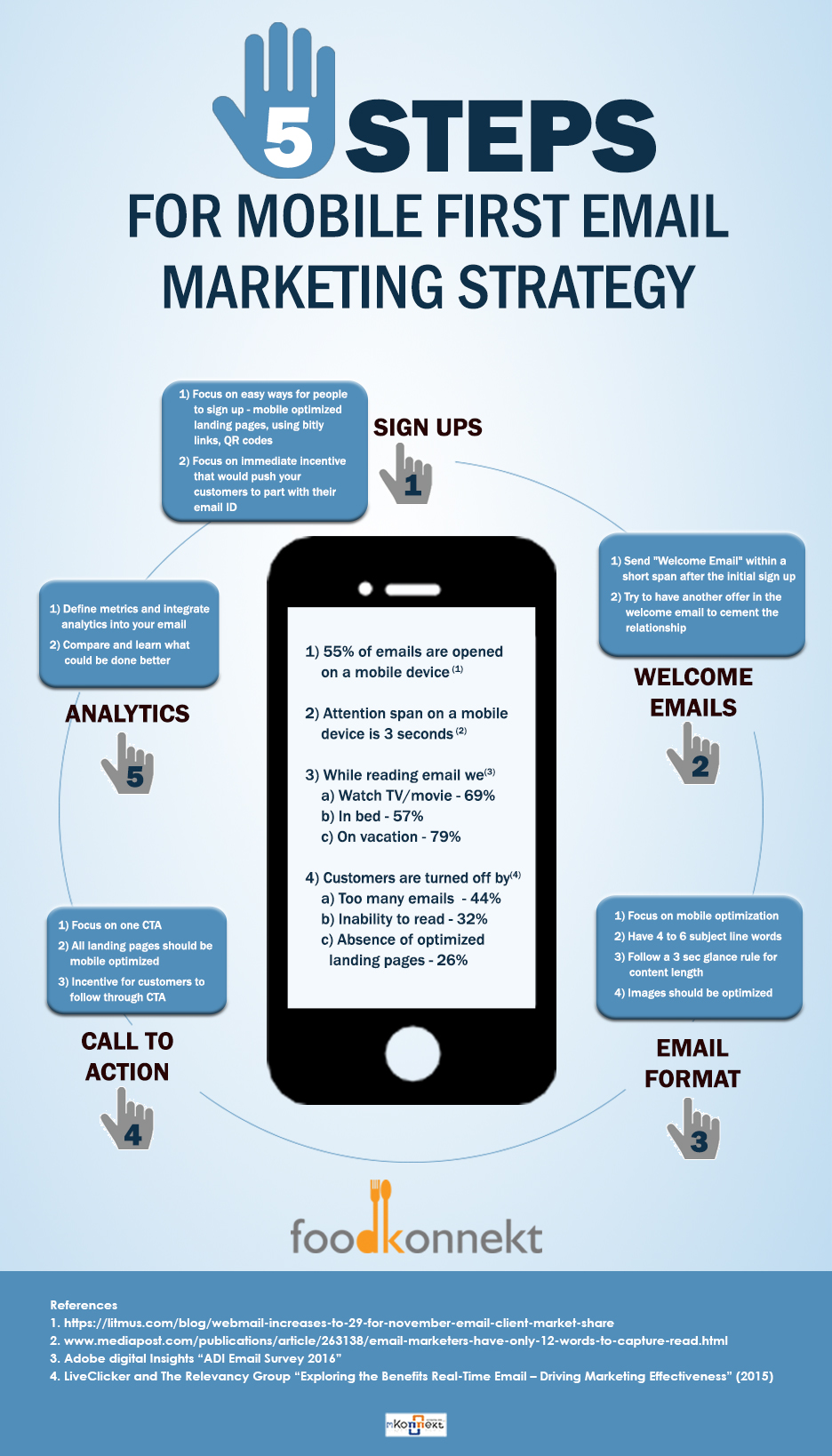Five Steps to Prepare for Mobile Email Marketing (Infographic)
3 Min Read By Seshu Madabushi
Mobile First. Stats say 55 percent of email is now opened on a mobile device.
You have three seconds on mobile to capture the reader’s attention.
Multitasking with email. In U.S., we check email while watching TV or a movie (69 percent), in bed (57 percent), and on vacation (79 percent), according to the Adobe digital Insights “ADI Email Survey 2016.”
The biggest turnoffs people have with mobile email, according to LiveClicker and The Relevancy Group’s “Exploring the Benefits Real-Time Email – Driving Marketing Effectiveness” are: Receiving too many (44 percent), Not relevant (37 percent), Too small to read and interact with (32 percent), Website and landing pages not mobile optimized (26 percent) and Not well formatted for mobile phones (21 percent.)
Now that we have established the having a “Mobile First” strategy is a must, let’s look at some of the email marketing strategies that you have to adopt in order to make this strategy a reality.
Sign Ups
Your customers have smartphones tied to their hip and that means your sign up strategy has to be mobile friendly. Have QR codes or user friendly bitly URLs which are visible that your customers can scan or type in easily. Given that your customers are looking for instant gratification it is always useful to have an incentive which they can use immediately – this solves two problems for you. Your customers (if they like the incentive and hence it is to your advantage to have a rock solid incentive that is inline with your customer profile) will provide a valid email ID and also an email ID which they can check on their smartphones. This translates to the fact that when you send a follow up email or marketing emails they are more likely to open and read them.
Welcome Emails
Once they sign up make sure that you send a welcome email within a very short time span. This is very important as you want to remind your customers as to why they have signed and when they have signed – so your welcome email has to be personalized based on the sign up offer. Note that the welcome email has to be sent after the customer gets the offer as the welcome email would be a way to introduce your store, what they can expect and links to your social media etc.
Email Format
With out a question your emails have to be mobile optimized – Design, Subject Line, content length, images and links.
Design: Choose a design which works well for most of the mobile screens from a display perspective. Most of the platforms including MailChimp, Constant Contact have designs that are mobile friendly. The design includes font size as well as how the emails would look horizontally and vertically
Subject Lines: With six-ten subject line words, emails will have an open rate of 21 percent and increasing the number of words decreases the open rate, as per Inc.com research.
Content Length: Stick to a three-second rule where the customers are glancing through your content. The length should fit in one or two screen sizes and anything beyond that will make your customers scroll down.
Images and Links: Your content should be a mix of images and text – the images should be optimized from a size and dimensions perspective. Your image size should be around 5-6 KB and there are multiple tools including Canva etc. The links should be clickable and make sure that the landing pages are mobile optimized. Include your social media links as you would like to get your customers follow you on your social media channels as well.
Call To Action
According to a latest report around 57 percent search on a mobile result in a store visit – juxtaposing that number to email marketing, we just cannot emphasize more on the CTA in your email. Your CTA should be linked to a coupon or offer that can redeemed immediately. Note that the we need to have one or two CTA – not more than that as you want your customers to click on a link that will enable them to take action
Analytics
Now that you have designed emails and sent them, you want to check how they have fared. Some of the metrics you want to keep track of – which devices, open rates, click rates, location where the emails have been opened. Also integrate Google Analytics in order to view and analyze which strategies worked, what is the impact etc.
Smartphones have revolutionized communication between customers and businesses. Now businesses have to adapt to this paradigm shift and focus more on “mobile-first” strategies in order to take advantage or be left out.


